
We live in time
December 31 - Finished reading The sense of an ending by Julian Barnes (in the german translation by Gertraude Krüger), "the story of a man coming to terms with the mutable past". This is how the book starts:"We live in time - it holds us and moulds us - but I’ve never felt I understood it very well. And I’m not referring to theories about how it bends and doubles back, or may exist elsewhere in parrallel versions. No, I mean ordinary, everyday time, which clocks and watches assure us passes regularly: tick-tock, click-clock. Is there anything more plausible than a second hand? And yet it takes only the smallest pleasure or pain to teach us time’s malleability. Some emotions speed it up, others slow it down; occasionally, it seems to go missing - until the eventual point when it really does go missing, never to return."
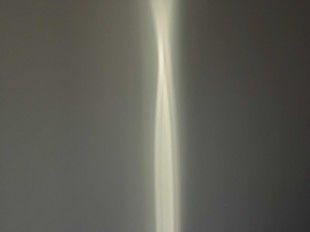
Projection
December 29 - Morning light.
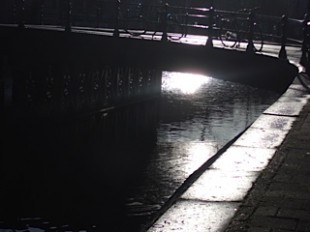
Amsterdam
December 18 and 19 - With the ICE to Amsterdam. Morning walk in winter sun light. Vincent van Gogh’s Blossoming Almond Tree in the Van Gogh Museum. In the evening visiting a performance of Orest, the new opera by Manfred Trojahn at Het Muziektheater. "The composer drew his inspiration from a rarely staged tragedy by Euripides featuring Orestes, the brother of Elektra and Iphigenia, as the central character. Following the murder of his mother Klytaemnestra he seeks escape from his nightmares and tries to find his place in society. However, the death sentence pronounced by the men of Argos against Elektra and Orestes appears to have sealed his fate. Can the execution of this sentence only be thwarted by new deeds of violence? With Helena already destined to become the new victim of the siblings, the radiant form appears of her daughter Hermione, who is immune from the curse of the gods and is able to reveal a new path to Orestes. Ultimately it becomes apparent that the gods have had their day."

Subvertising
December - "Banksy is probably the most popular, yet most mysterious, urban street artist in the world – and he works at incredible extremes. He has become internationally known as a subversive graffiti artist – yet manages to maintain a secret identity. He is a counter-cultural prankster, but has art in major cosmopolitan galleries around the globe. Banksy’s work has sold to Hollywood celebrities for over half a million dollars a piece, but much of his subvertising is freely (and illegally) drawn on public surfaces. He works against the mass media establishment, but has been featured in local, national, international news. He is on some level clearly a geek at heart but at the same time his art is always on the cutting edge." (web urbanist - Local Designs to Global Destinations)
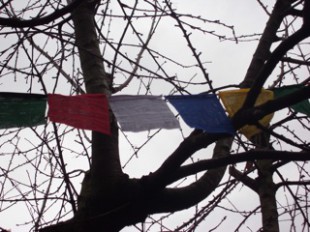
Cherry Tree
December 12 - From a friend in Northern California: Tibetan prayer flags to decorate the cherry tree for christmas. Thank you, Anna!
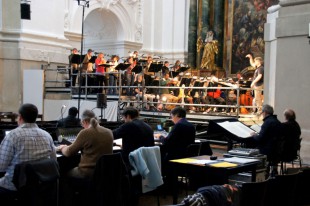
Ensemble Modern
December 5 - Wenn die Bühne brennt is the title of a portrait film about Frankfurt based Ensemble Modern shown on German-French cultural channel arte. More than a year Manfred Scheyko and his film team accompanied the musicians to concerts all over the world. Climax of the 52 minutes film is a clip from a recording of Luigi Nono’s Prometeo at this year’s Salzburger Festspiele.
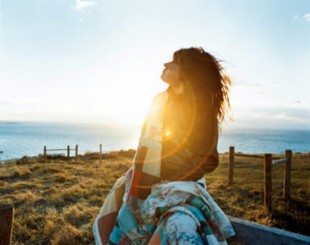
Enlightening
December 3 - Look at What the Light Did Now. Well made documentary by Anthony Seck about American-Canadian singer/songwriter Leslie Feist and her collaborators. On DVD. More than just another film about a musician.
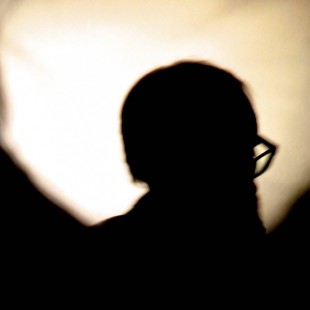
The Art of Noises
November 29 and 30 - Two inspiring nights at Duesseldorf’s salon des amateures: On 11/29 Dr. Johannes Ullmeier presents a lecture talk titled "The Art of Noise - from futurism to today" with rarely heard sound samples from Luigi Russolo and other noise artists. It is the prelude for "Resonanzraeume", a project by the Institut for Media and Cultural Studies at Heinrich Heine University. The talk is followed by the performance "50 Sculptures" by the Institut Fuer Feinmotorik. On 11/30 the Intro Magazine celebrates its 20th anniversary. Special guest is Peter Licht, a congenial poet/musician from Cologne. He starts his performance with "Begrabt mein iPhone an der Biegung des Flusses" ("Bury my i-phone at Wounded Knee"), a title from his new album "Das Ende der Beschwerde" ("The End of Complaints"): "Begrabt mein iPhone an der Biegung des Flusses. Da wo in der Mitte der Gesellschaft eine Kausalkette entspringt. Fahrt meinen Wagen in die Wüste und lasst ihn stehen wo der Tank endet. Blast meine geheimen Nummern in die Wolken, die vorbei ziehen. Zieht mein Gesicht in den Sand und handelt mit meiner DND. Zieht Kornkreise in die stehenden Felder meiner Biografie. Lest meine Gedanken, verschenkt die Daten, verkauft mein Fleisch. Verkauft mein Fleisch an den billigen Ständen und verwertet die Reste. Ich wüsste niemanden, der sich selbst gehörte - hat noch niemand jemals von gehört..."
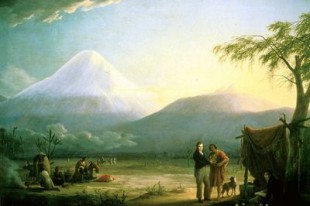
Measuring up
November 28 - Everyone has read it: Daniel Kehlmann’s Measuring the World. The 2005 novel, which is (loosely) based on the lives of 19th century explorer Alexander von Humboldt and mathematician Carl Friedrich Gauß is allegedly one of the most sold books in Germany in the last few years. It has been translated in many languages and is required reading for the graduation exams. I read it and - frankly - dont understand the fuss.
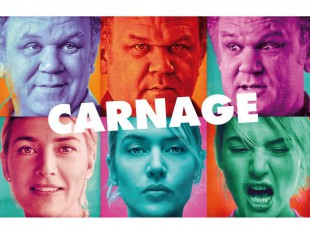
Carnage
November 26 - Cinema visit: Carnage is Roman Polanski’s adaptation of Yasmina Reza’s hit theater play The God of Carnage. It is a dark comedy, in which two pairs of parents meet after their teenage sons were involved in a shool brawl. In the constriction of a New York apartment they lose their composure and go at each other. Its a great pleasure to watch four world class actors giving their best: Jodie Foster, John C. Reilly, Christoph Waltz und Kate Winslet.
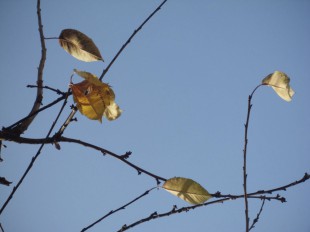
Cherry Tree
November 21 - Waiting for a breeze.
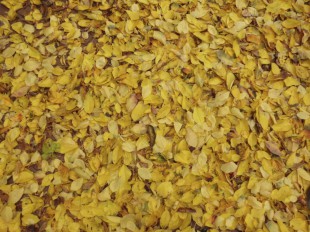
Cherry Tree
November 11 - Fallen.
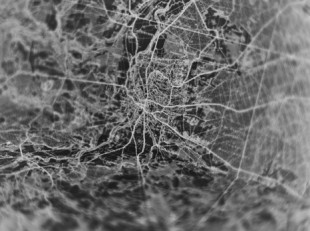
Map and territory
November 10 - After having read The Map and the Territory, the new novel by French author Michel Houellebecq, in which the artist Jed Martin shoots to fame by exhibiting photographs of old Michelin maps, I discover Karte und Botschaft, a student project at the Design Department of the University of Applied Sciences Duesseldorf (FH D): inspired by the novel, they started to create photographs of maps in the style of Jed Martin.
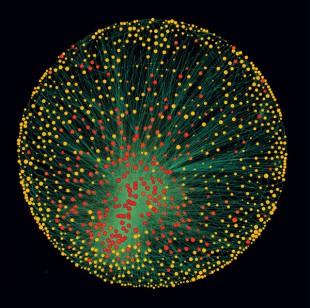
Scientific proof
November 4 - Ever so often science proofs what we have known for a long time. The network of global corporate control is a paper by Stefania Vitali, James B. Glattfelder and Stefano Battiston, that was published earlier this year: "We present the first investigation of the architecture of the international ownership network, along with the computation of the control held by each global player. We find that transnational corporations form a giant bow-tie structure and that a large portion of control flows to a small tightly-knit core of financial institutions. This core can be seen as an economic ‘super-entity’ that raises new important issues both for researchers and policy makers.” The study shows that the world belongs to 147 transnational corporations, whose interests are interconnected and which control nearly 40% of the monetary value of all such corporations. Of the top 50 organizations the majority are financial institutions.
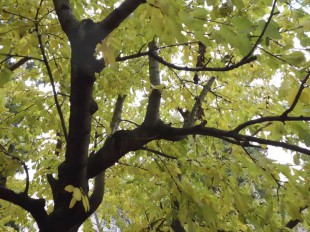
Cherry Tree
November 3 - Turning yellow.
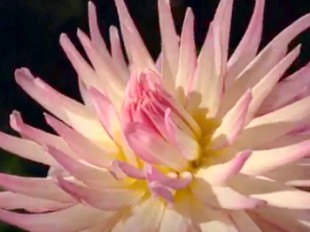
Gratitude
October 9 - A link from a friend in California: Gratitude, a TEDx presentation about gratefulness by film maker Louie Schwarzberg, who is the founder of a stock footage firm company, specialized in slow motion: "I started shooting time lapse photography. It would take me a month to shoot a four minute role of film. It was all I could afford. I’ve been shooting time lapse flowers continously, non stop, twenty four hours a day, seven days a week, over thirty years. As the seasons move, there is a dance I get never tired of. Their beauty imerses us with color, taste, touch. Beauty and seduction are natures tools for survival. Because we protect what we fall in love with." The off voice of the old man in the film belongs to David Steindl-Rast, a benectine monk and spiritual teacher. Thanks for the link, Deborah!
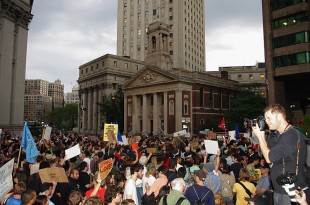
Revolution
October 8 - It started three weeks ago in New York: Inspired by the demonstrations and changes in the Arab world, people protested against social and economic inequality and corporate greed. Since than the Occupy movement is spreading from Wall Street all over the western world: Occupy Wall Street is a leaderless resistance movement with people of many colors, genders and political persuasions. The one thing we all have in common is that We Are The 99% that will no longer tolerate the greed and corruption of the 1%. We are using the revolutionary Arab Spring tactic to achieve our ends and encourage the use of nonviolence to maximize the safety of all participants."

Plain-talking
October 6 - In an interview about his new novel Mittelreich, German actor Josef Birbichler finds clear words for the current state of affairs: "For me it is clear. In the year 1989 the corrective broke away. Until then the capital had to be afraid, that there might be another - a better - form of society. That’s why they couldn’t carry it to the extremes. Now they can go to the extremes with everything. .. Somehow it is really frivolous, that they pretend, that they discovered it. But it shows: They have their backs against the wall. Even our Federal President suddenly recognizes, that it is wrong to individualize the profits and to socialize the immense losses. It calls the whole political system into question. It might well be, that in the long run democracy is not the most suitable system for capitalism. What is coming next will be blood and mud. What was until now was nothing compared to what’s coming." (translated from the literature magazine in Die Zeit)
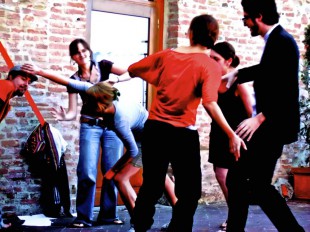
Improvisation
September 24 to October 2 - As part of a group of sixty students and teachers I take part in a week long course on improvisation in Montepulciano / Tuscanny. The meeting is organised and payed for by the Kolleg fuer Musik und Kunst Montepulciano, an academic institution of all the art academies and music universities in North Rhine-Westphalia. Its housed at the European Academy for Music and Performing Arts at beautifully renovated Palazzo Ricci in Montepulciano.
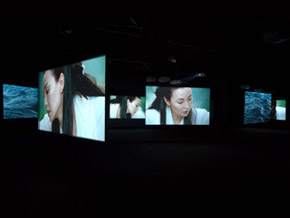
move
September 21 - move. Art and Dance Since the 1960s is the title of an exhibition at Duesseldorf’s K20. "It’s main focus is on visual artists, dancers and choreographers who create sculptures and installations that directly affect the movement of exhibition goers, turning spectators into active participants - perhaps even dancers." (catalog) I enjoy dangling in William Forsythe’s Choregraphic Object The Fact of Matter (2009): a few dozen plastic rings hanging from textile ribbons. They also show Ten Thousand Waves, the new nine-screen video installation by Isaac Julien: "Filmed on location in the ravishing and remote Guangxi province and at the famous Shanghai Film Studios and various sites around Shanghai, Ten Thousand Waves combines fact, fiction and film essay genres against a background of Chinese history, legend and landscape to create a meditation on global human migrations. Through formal experimentation and a series of unique collaborations, Julien Isaac seeks to engage with Chinese culture through contemporary events, ancient myths and artistic practice." (press release)
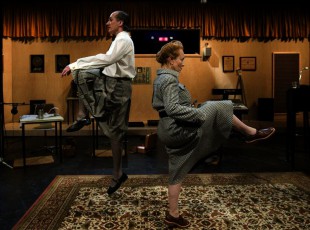
Radio on TV
September 17 - Radio Ro is a hilariously funny musical theater show, that was produced three years ago at Schauspiel Köln. Directed by Clemens Sienknecht. Four members of an outdated recording studio perform "famous songs - but with altered lyrics and also altered melodies". Finally on TV (3sat).
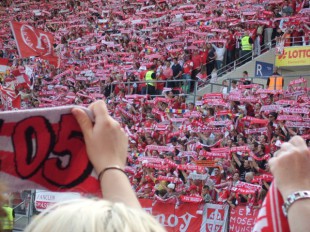
You′ ll never walk alone
September 10 - Soccer in the new arena in Mainz. 31 000 spectators. Mainz 05 : 1899 Hoffenheim. Despite impressive chanting the hosts loose the game 0:4.
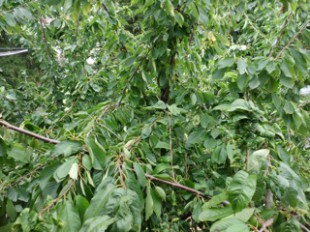
Cherry Tree
September 2 - Tired. At the end of a long summer.
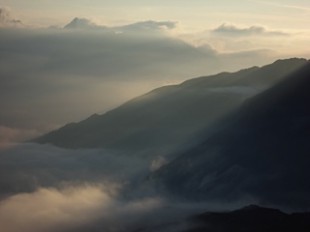
Walking
August 29 to 31 - Three day hike in the Swiss alps on the rear side of the "Sleeping Indian" (above Engelberg) with my old school mate Herbert H. Bannalp - Urnerstaffel - Walegg - Walenalp - Brunnihütte - Rugghubel - Rot Graetli - Bannalper Schonegg - Bannalp. Listening to cow bells, wind and running water. Watching the path in front and an eagle above. Feeling rocks under my feet and fresh air in my lungs.

Mapping
August 18 - An old friend comes for a visit - and brings a new book: Infinite City - A San Francisco Atlas by Rebecca Solnit. What makes a place? This "brilliant reinvention of the traditional atlas, searches out the answer by examining the many layers of meaning in one place, the San Francisco Bay Area. In the most inventive manner Solnit has compiled 22 beautiful color maps, each connecting different perspectives of the city. Map number 3 is called Cinema City: "This is a map about two moments in the history of film and San Francisco: one in which photographer Eadweard Muybridge laid the foundation for a new technology of moving pictures that would evolve into cinema as we know it; and another, eighty years later, when his fellow Englishman Alfred Hitchcock filmed his dark valentine to San Francisco, Vertigo, here. Of course, there are countless other moving picture and media moments of note—movies such as Bullitt, with its lyrical car chases, breakthroughs such as Philo T. Farnsworth’s invention of television on Green Street—but maps are always selective, and Muybridge and Hitchcock are a striking pair of imagemakers. The genesis and an apotheosis of cinema are charted on this map, whose last theme is decline—if not of the medium, at least of its dream palaces, the movie houses that once were the exclusive home of cinema. There were over seventy such theaters in San Francisco, many of them in the neighborhoods, when Vertigo debuted in 1958, but only a handful remain open. They were replaced first by television, then by video rentals, and by other digital ways of watching films on small screens, even more than they were by the downtown multiplexes. So there are three eras on this map, the 1870s-1880s, the 1950s, and the present, in which we are heirs to their wealth but makers of a curious imagistic poverty as well." Thank you, Anna: for your visit and for the book.
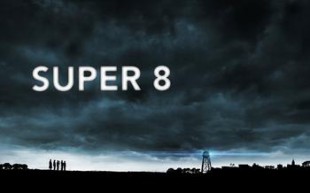
At the flicks
August 13 - Super8. This summer’s blockbuster. Written by J.J. Abrams, produced by Steven Spielberg. Boy meets alien (girl). Great story telling. Haunting images. Reminiscent of Close Encounters, E.T. and Back to the Future. Amblin.

August 12 - Listening to birdsongradio.
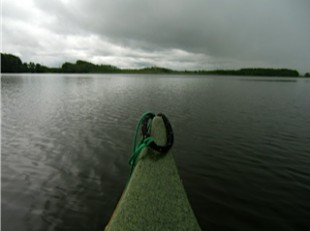
Faith
July 25 to 30 - Canoe trip on the lakes of Mueritz National Park. Contemplating Henry David Thoreau: "Everyone must believe in something. I believe I’ll go canoeing".

Getting high on music
July 22 - Scientists at The Neuro, a research and teaching institute at McGill University in Montreal, have found that "the pleasurable experience of listening to music releases dopamine, a neurotransmitter in the brain important for more tangible pleasures associated with rewards such as food, drugs and sex." Published in Nature Neuroscience, the results suggest why music, which has no obvious survival value, is so significant across human society. “These findings provide neurochemical evidence that intense emotional responses to music involve ancient reward circuitry in the brain", says Dr. Robert Zatorre, neuroscientist at The Neuro. “To our knowledge, this is the first demonstration that an abstract reward such as music can lead to dopamine release. Abstract rewards are largely cognitive in nature, and this study paves the way for future work to examine non-tangible rewards that humans consider rewarding for complex reasons.”
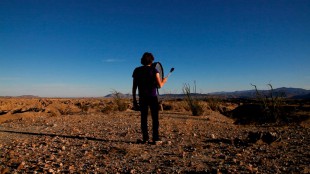
Music for the desert
July 13 - I visited an inspiring exhibition and discovered a great young artist. The title of the exhibition is BIG PICTURE and the name of the artist is Richard T. Walker. The exhibition - still to be seen until November 20 at K 21 in Dusseldorf - "revolves around a selection of 12 installations which are displayed in a specially designed architectural setting (Stadler Prenn Architekten, Berlin) that is designed to emphasize the spatial and physical aspects of the film projections." (Curator Doris Krystof) The artist, born in England, is 34 years old. "In the spirit of an introverted Romantic he sets out into the country to explore himself and nature...Walker always approaches the environment cautiously and slowly enters a dialogue with the bizarre plants and stone formations...he makes use of the emptiness of the landscape, but personalises the motionless desert inhabitants by focusing on them individually and providing them each with a musical performance especially adapted to them." (catalogue) The hierarchy of relavance, the video selected for this exhibition, has a duration of 8 minutes. Towards the end of an elaborate voice over, Walker says: "After some time he opened his eyes and just stood there: still and quiet in memory of the melody. He took a long deep breath contemplating the actions he knew he needed to take. So that ones again he would be able to stand back in awe and truly appreciate the magnificence of this landscape. He picked up his back and put it over his shoulder, beginning his long walk into the distance. His pace began slow and considered, reflecting the rhythm of the song of distraction, the song, that briefly had set him free.“
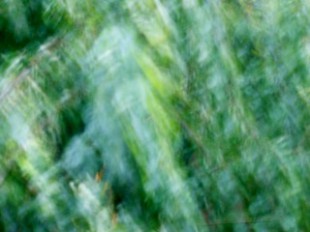
Cherry Tree
July 7 - Listening to the light percussion of a gentle summer rain.
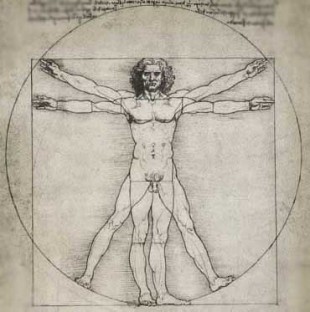
Specialization
June 27 - "A human being should be able to change a diaper, plan an invasion, butcher a hog, conn a ship, design a building, write a sonnet, balance accounts, build a wall, set a bone, comfort the dying, take orders, give orders, cooperate, act alone, solve equations, analyze a new problem, pitch manure, program a computer, cook a tasty meal, fight efficiently, die gallantly. Specialization is for insects." (Robert A. Heinlein, science fiction author) As quoted by industrial designer Chris Koehne.
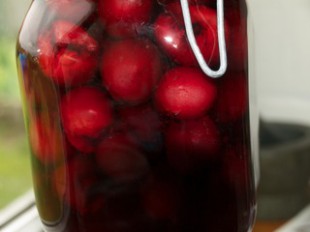
Cherry Tree
June 26 - Processing. Jam, juice, cans.
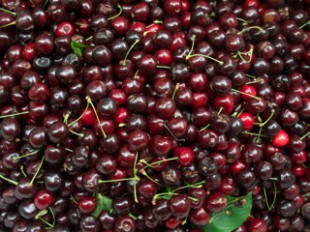
Cherry Tree
June 25 - Harvest. The higher the sweeter. The highest are for the birds.

Cherry Tree
June 13 - Cherry-Time
Cherries of the night are riper
Than the cherries pluckt at noon
Gather to your fairy piper
When he pipes his magic tune:
Merry, merry,
Take a cherry;
Mine are sounder,
Mine are rounder,
Mine are sweeter
For the eater
Under the moon.
And you ’ll be fairies soon.
In the cherries pluckt at night,
With the dew of summer swelling,
There’s a juice of pure delight,
Cool, dark, sweet devinely smelling.
Merry, merry,
Take a cherry;
Mine are sounder,
Mine are rounder,
Mine are sweeter
For the eater
In the moonlight.
And you ’ll be fairies quite.
When I sound the fairy call,
Gather here in silent meeting,
Chin to knee on the orchard wall,
Cooled with dew and cherries eating.
Merry, merry,
Take a cherry;
Mine are sounder,
Mine are rounder,
Mine are sweeter.
For the eater
When the dews fall.
And you ’ll be fairies all.
(Robert Graves, 2003)
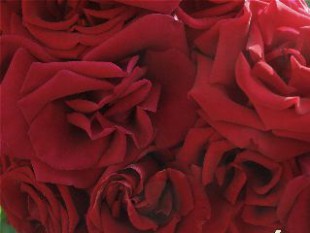
Perfume of June
June 6 - Stop and smell the roses.
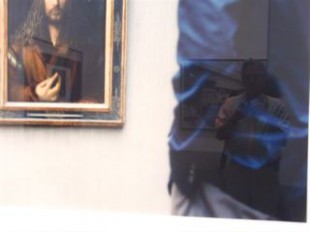
Thomas Struth
June 2 - Visit to Thomas Struth - Photographs 1978-2010 at K20 in Duesseldorf: More than 100 motifs, most of them large-sized, by the famous German photographer. After studying painting with Gerhard Richter, he became a student of Bernd and Hilla Becher at the Kunstakademie Duesseldorf. Part of the photo exhibition is a room to listen to music: "Music has always played a fundamental role in my life. For this reason, the guitarist Frank Bungarten and I have put together a music program for the Education Department’s exhibition room of the Kunstsammlung NRW. The program consists of a special selection of pieces randomly played in high audio quality in the ’Labor’. Besides this top musicians will lead master classes, where you can experience firsthand how artistic work can develop through lively practice. The acoustic ’look’ behind the scenes in the direct vicinity of the Kunstsammlung’s collection is intended as a way of letting the different forms of perception and creation with which artists express their beliefs and world views interact with one another. After visiting the audio exhibition in the ’Labor’, music from different genres, epochs, and different cultural spheres will reverberate in the ears of visitors as they continue to look at the artworks in the collection, offering a different perspective on visual art.” (Thomas Struth)
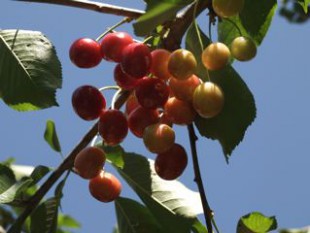
Cherry Tree
May 31 - Ripening.
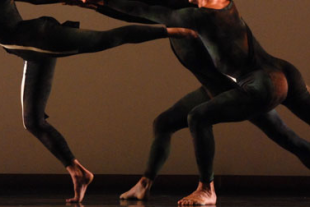
Nearly 90
May 21 - Merce Cunningham Dance Company on their Legacy Tour at Staatstheater Wiesbaden: "Nearly 90² is a restaged version of Nearly Ninety, Cunningham’s final work, presented against a black backdrop with new costumes and lighting. The pared-down production brings a renewed clarity to the choreography, illuminating the keen, geometric beauty honed over Cunningham′s 65-year career of dancemaking. Like the original iteration, the work weaves together languid, meditative phrases and vigorous ensembles to create a richly textured evening of dance. The work is accompanied by new music from former Led Zeppelin bassist John Paul Jones and mixed-media sound composer Takehisa Kosugi." An evening of immense inspirational power - and an opportunity to take a bow before the genius of Merce Cunningham.
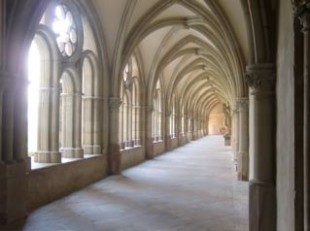
Trier
May 13 - Every other year the University of Applied Sciences Trier comes forward with a new version of designfusion, an event designed by students for students, teachers and the general public. Exhibitions, films, lectures, workshops and a mega fashion show. This year’s topic is KULT (cult). Following an invitation by Prof. Franz Kluge, I give a lecture talk: "Sensory Awareness - the art of perception". In the afternoon, I follow the KULT signs to exhibitions in different locations of the university throught town - and discover the beauty of Germany’s oldest city. In the Gothic cloister of the 1700 year old cathedral (the oldest cathedral in the country), I listen to a coincidental concert: It starts with the percussion of hammer and chisel of a single stonemason up on a scaffolding and the voice of a blackbird on top of a stone statute - and ends with five strokes of the church bells. Closing time.
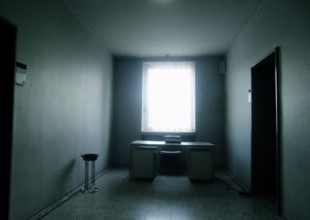
"Like a dog!"
May 10 - „Someone must have been telling lies about Josef K., he knew he had done nothing wrong but, one morning, he was arrested.“ That is how Franz Kafka started his famous novel The Trial. First published in 1925, it tells „the story of a man arrested and prosecuted by a remote, inaccessible authority, with the nature of his crime revealed neither to him nor the reader.“ (wikipedia) By entering Die Hundsprozesse, a performance installation in a disused municipal office building in Cologne, the theatergoer is forced to play the part of Josef K.. The play/performance/installation is commisioned by Schauspiel Köln and put on by Danish theater company SIGNA. “SIGNA devises site-specific projects fitted to a particular space by redefining abandoned, disused buildings and sites and transforming them into a timeless theatrical space, an artificial world that the audience is invited to visit and explore.“ After registration in a bare office the vistor/defendant spends hours wandering from interrogation to interrogation, waiting, witnessing bizarre torture scenes and beeing lured into corrupt affairs. For up to six hours one can spend in the so called Basalgericht (base court). I went with a group of students from my Sensory Awareness course. The inescapable introspection brings forward all kinds of emotional reactions, changinging from paranoid outrage to depressed capitulation.
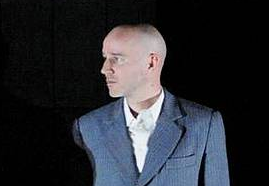
What now?
May 7 - Little Man, What Now? is a novel by German writer Hans Fallada. It was first published in 1932, a year before the fascists came into power. With its description of the last days of the Weimar Republic and the social decline of bookkeeper Johannes Pinneberg and his wife Lämmchen, the book is considered to be a modern classic. Belgian director Luk Pervceval adapted the story for theater and put it on stage at Muenchner Kammerspiele. The production met with critical acclaim and was invited to the Theatertreffen 2010 in Berlin and to the International May Festival 2011 at Hessisches Staatstheater in Wiesbaden, where today I had the chance to see it. Great theater! Four and a half hours of outstanding performances by a top-class ensemble.
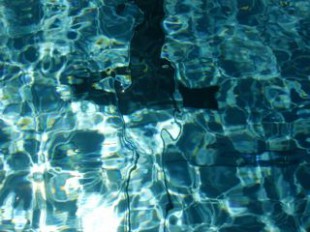
Swimming
May 5 - Start of the open air pool season.
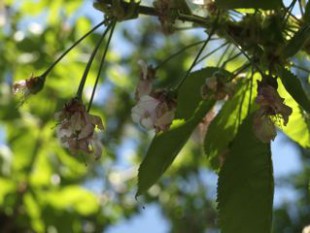
Cherry Tree
April 23 - Happy Easter!
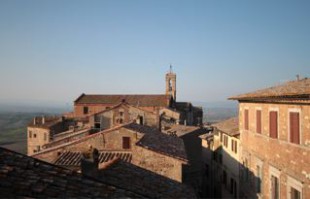
Tuscany
April 15 to 18 - Meeting with fellows at Palazzo Ricci in Montepulciano in order to prepare a workshop on improvisation in fall. The workshop is a project of the College for Music and Art Montepulciano, an academic institution of art- and music universities in North Rhine-Westphalia.
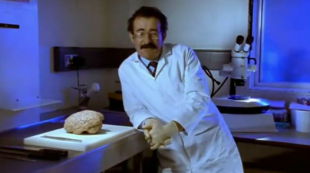
Ode to the Brain
April 12 - Latest release by The Symphony of Science: Ode to the Brain! The Symphony of Science is a musical project headed by John Boswell: "The goal of the project is to bring scientific knowledge and philosophy to the public, in a novel way, through the medium of music. Science and music are two passions of mine that I aim to combine, in a way that is intended to bring a meaningful message to listeners, while simultaneously providing an enjoyable musical experience." (John Boswell)
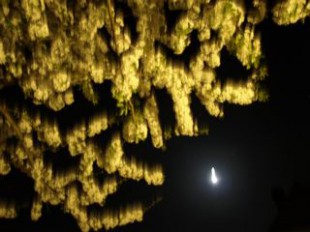
Cherry tree at night
April 10 - In full bloom - beneath a shaky moon.
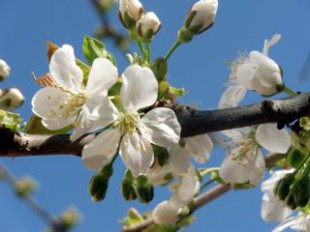
Cherry Tree
April 2 - First blossoms.
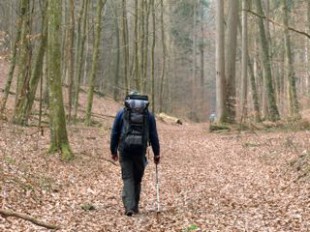
Out for a walk
March 24 to 28 - Five days along the Way of St. James through the Biosphere Reserve Palatinate Forest-Vosges du Nord. Landau, Bad Bergzabern, Fischbach, Eppenbrunn, Hornbach. Flowering almond trees, a light green glow around the broadleaf trees. Murmuring streams and reflective ponds. In Martin Heidegger’s famous essay The Pathway we read: "... The Simple conserves the puzzle of what abides and what is great. Spontaneously it enters men and yet needs a lengthy growth. ...But the message of the pathway speaks just as long as there are men who, born in its breeze, can hear it. They are hearers of their Origin and not servants of machination. In vain does man try with his plans to bring his globe into order if he is not ordered to the message of the pathway. The danger looms that today’s men are hard of hearing towards its language. They have ears only for the noise of media, which they consider to be almost the voice of God. ...Certainly the number of those who still recognize the Simple as their hard-earned possession is quickly diminishing. But it is these few who will everywhere be the abiding ones. Through the gentle force of the pathway they are going to be able to survive the gigantic energies of atomic power which human calculation has artifacted for itself and made into fetters of its own doing. The pathway’s message awakens a sense which loves the Free and, at a propitious place, leaps over sadness and into a final gladsomeness. This resists the stupidity of simply working, which when done for itself promotes only what negates. ..."

Kaikoura und Oamaru
February 23 - Skilled employees from Grieger mount two large size prints from my photo series new sea land scapes in a permanent exhibition at Robert Schumann School of Music and Media in Düsseldorf.
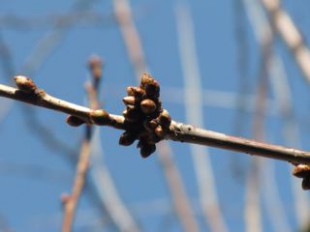
Cherry Tree
March 21 - First buds.

Humility and courage
March 16 - I agree with American composer John Luther Adams who comments the events in Fukushima on his facebook site: "As we grieve for the people of Japan and watch in horror the unfolding catastrophe, one can’t help but wonder: How many more Fukushima Daichis and Chernobyls will it take? How many more Deepwater Horizon and Exxon Valdez disasters before we find the humility and courage to shape a different future for our species?"
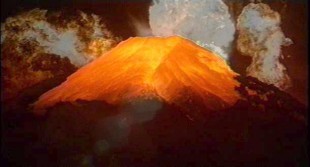
Nightmare
March 14 - As the bad news from Fukushima get worse, a film by Japanese filmmaker Akira Kurosawa comes to mind: Dreams. It was released 1990 and consists of eight episodes. Each episode represents one of his own dreams. Mount Fuji in Red is the second nightmare in the film. A large nuclear power plant near Mount Fuji has begun to melt down, painting the sky red, sending millions of Japanese people fleeing into the ocean.

Fukushima
March 13 - Among a million other things the earthquake and tsunami also demaged a nuclear power station about 150 miles north of Tokio. An explosions has taken off the roof of one of four reactor buildings.
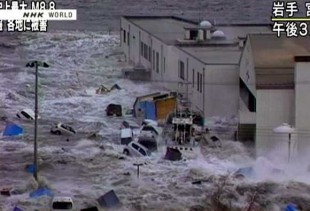
Japan
March 12 - Magnitude 8.9 earthquake 231 miles northeast of Tokyo. The earthquake is said to be the fifth largest in the world since 1900 and the largest quake ever to hit Japan. Within an hour after the quake a tsunami with a wall of water up to 30 feet high washes over the Japanese coast. I am stunned by the images on TV: Cars and trains are swept away like toys. Buildings collapse. Fires break out.

Extra time
February 28 - Dense fog at the airport in Bergen. No flights in, no flights out for more than 12 hours. Following the recommendation of a friendly book seller I get a copy of Out Stealing Horses by norwegian author Per Petterson. Sitting on my backpack between suitcases and boxes I have a great time reading a good book: "Down there outside the barn the dairymaid was washing her buckets and tubs in the stream with water and soda, and the sun flashed in the metal and in the icily clear water pouring into the buckets and splashing out again, and we waved to her, and she raised her hand and waved back, and a shining streak of water flew up in an arc through the air before it fell to the ground."
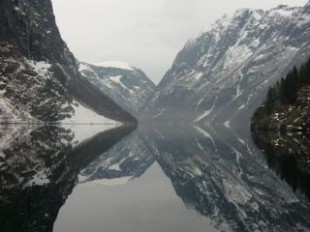
PLACES_IN_TIME | norwayfjords
February 26 - The Nærøyfjord is a fjord in Sogn og Fjordane county, Norway. The narrow fjord is a branch of the large Sognefjord. It has been listed as a UNESCO World Heritage Site and has been rated by the National Geographic Society as the world’s number one natural heritage site along with the Geirangerfjord. From the getty in Gudvangen I record a 30 minute take of video and seperate stereo tracks. It is the first recording in a series of six long-lasting takes for PLACES_IN_TIME | norwayfjords.
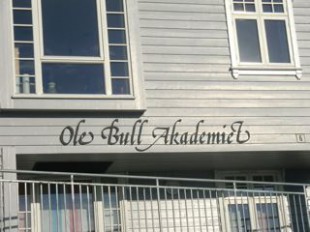
Folk music
February 23 - Ole Bull was a famous Norwegian violinist and composer. Robert Schumann once noted, that Bull was among "the greatest of all". In 1863 he got the idea to start an academy based on Norwegian folk music. More than a century later, 1977, Ole Bull Academy was founded. Today it is situated in a spacious building in Voss, a village surrounded by snow-capped mountains, forests and lakes, about 60 miles east of Bergen. The Academy works in close cooperation with Grieg Academy. It gives folk musicians an opportunity to attain a university level education and teaches Norwegian folk music and folk dance to university students. We arrive in Voss after a beautiful train ride and have the opportunity to record a session with eight students learning to play the hardanger fiddle from a local virtuoso.
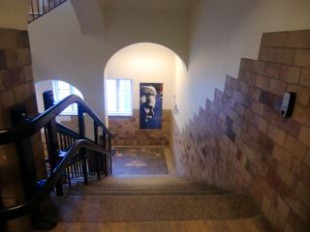
Grieg Academy
February 22 - Tour through Grieg Academy with Bjorn Einar Halverson. With a population of about 160 students the academy offers 4-year programs in performance, composition, pedagogy and music therapy. Stefan, the producer of an image film about Grieg Academy we intend to shoot in summer, scouts for locations. I give a presentation about the Institute For Music And Media to a group of Norwegian collegues and show Steve Reich: City Life to composition students.
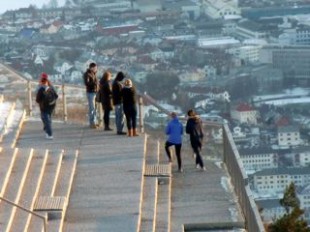
A city with a view
February 21 - Arrival in Bergen. With one of our students I visit Grieg Academy, a partner of Robert Schumann School of Music and Media. The city is surrounded by seven mountains. The most visited one is called Fløyen. It is 320 m high and offers - like a balcony - great views of the harbour city on the west coast of Norway.

Cherry Tree
February 19 - Pruning "...should be done in late winter, encouraging the plant to grow more during the growing season...A properly pruned cherry tree should have a scaffold shape. This means that there are branches circling the tree, perpendicular to the leader, and there should be an area of about two feet between the levels to allow for light to reach the lower leaves and fruit." (About Cherry Trees)

Ambient Soul
February 14 - New album: JAMES BLAKE by 22 year old James Blake. Whow! Music stripped to the bones. Slow. Without redundancy. Very long pauses. Tense and empty. Pop with black holes. Brave.
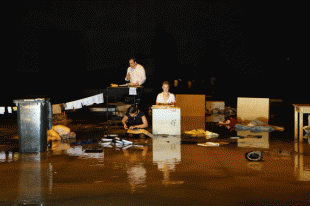
Flood
February 3 - Schauspiel Köln: Das Werk / Im Bus / Ein Sturz by Elfriede Jelinek, staged by Karin Baier. Three plays about greed, irresponsibility and human hubris. Great performances, especially by Thomas Loibl and Lina Beckmann and a fantastic stage design, that leaves the stage flooded - and the audience stunned.

Life
January 31 - Life is a nature documentary series made by BBC television. The original broadcast in UK consists of ten 50-minute episodes. After watching the first three parts on German TV on the previous Mondays, I ordered the DVD Set. "The budget and timescale for the series enabled the producers to set ambitious filming challenges, and expedition crews brought back several sequences which have never been shown before." The production facts are full of superlatives: a budget of more than 10 Million £, 3000 days of shooting, High Definition, high-speed cameras capable of shooting up to 8000 frames each. In the opening narration David Attenborough says: "Our planet may be home to 30 million different kinds of animals and plants, each individual locked in its own lifelong fight for survival. Everywhere you look, on land or in the ocean, there are extraordinary examples of the lenghts living things go to stay alive." This is TV at its very best.
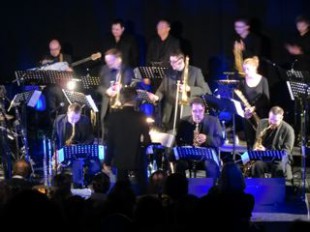
Jazztage Mainz
Januar 22 - Klangraum is a renowned studio for film music in Mainz. For the fourth time the three owners organise a two-day jazz festival. The second night starts with an unreckoned reunion. Three members of Missus Beastly, a world-jazz-oriented instrumental group, I admired in the mid seventies (break-up ’79), come on stage: Norbert Doemling (bass), Jürgen Benz (saxophon) and Burkhard Schmidl (keyboards). After each musician has played a solo, the three get into a nostalgic groove. I remember wild nights in the smoke filled university cafeteria 35 years ago with never ending pieces...Beastlies...Amon Düül...Guru Guru...Xhol Caravan...dancing girls in flying skirts. Second is the marburgjazzorchestra. "Why search far afield when the good is nearby?" they say and play music by German bigband composers. The SHS-trio closes of a great evening with live music: Heinz Dieter Sauerborn (saxophon), Hanns Höhn (bass) and Bernhard Sperrfechter (guitar). No drummer. Performed with virtuosity. Perfect!

Getaway
January 16 - Weekend foray to Alsace. Choucrote au poisson in Saverne. Sunset in Parc naturel regional des Vosges du Nord.
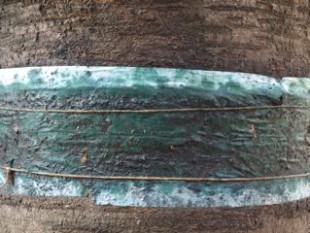
Cherry tree
January 9 - Hibernating.
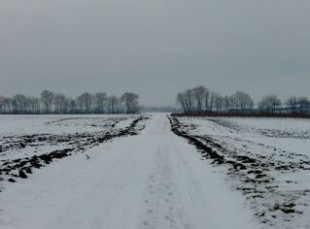
New Year’s resolution
January 1 - Keep walking - and pay attention to each step.